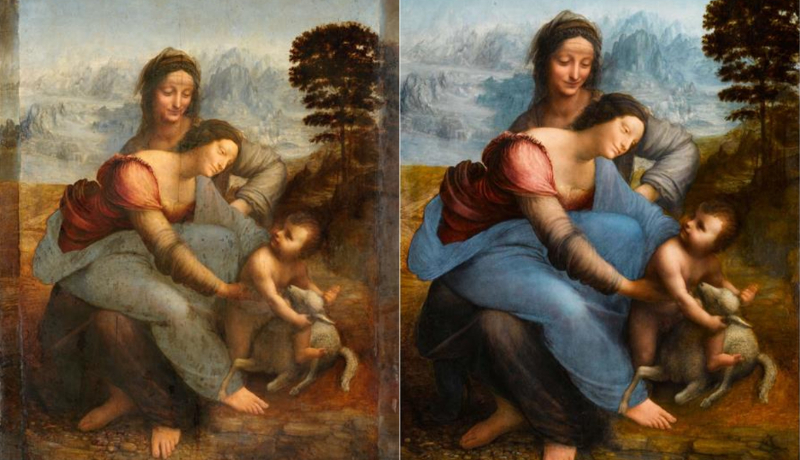There are numerous undiscovered details about Leonardo da Vinci’s masterpiece: The Virgin and Child with St. Anne (ca. 1503-1519). The picture may have been commissioned by Louis XII of France to commemorate the birth of his only daughter Claude in 1499.
The topic would be appropriate for the occasion given that St. Anne is the patron saint of expectant mothers and women trying to conceive. Anne was the name of the King’s wife. Unknown circumstances prevented the artwork from being given to Louis XII, and observers reported that it was still in Leonardo’s workshop in 1517.
The Virgin and Child with St. Anne is first mentioned in the 1683 inventory of the Palace of Fontainebleau. The painting eventually ended up in the collection of the French royal family. Although it cannot be proved, it is most likely that Salai, Leonardo’s assistant, sold the picture to King Francis I.
Three generations—St. Anne, her daughter, the Virgin Mary, and a baby Jesus—are shown in the scene. It is clear from various preparatory pieces that Leonardo gave the composition of the painting a lot of thought. The enormous preparatory work The Burlington House Cartoon (ca. 1499–1501), which displays the young figure of Saint John the Baptist, is strongly related to the picture The Virgin and Child with St. Anne because it shows a young Jesus playing with a lamb. The use of the lamb, a Passion-related symbol, alludes to Christ’s future. By designating St. Anne as the axis of the triangular composition, Leonardo gave the saint special prominence.
The setting for the religious scene is a fanciful highland landscape. Leonardo simulated distant mountains by using atmospheric perspective. Additionally, he used the sfumato technique, which reduced the change in color and added a subtle haziness to the entire image.
The Virgin and Child with St. Anne is a significant work of art that both Leonardo’s contemporaries and later generations of artists were influenced by. Leonardo had a significant impact on Renaissance painters, as seen by works like Andrea del Sarto’s Charity (1518) and Raphael’s Madonna and Child with Saint John the Baptist (1507). Many prominent artists of the day, including Eugène Delacroix, Édouard Manet, and Jean-Baptiste Carpeaux, replicated the painting when it was displayed in the Salon Carré at the Louvre in the middle of the 19th century.
The father of psychoanalysis, Sigmund Freud, wrote an essay titled Leonardo da Vinci: A Memory of His Childhood that included an examination of the picture. Max Ernst and other Surrealist artists were influenced by Freud’s interpretation. As a tribute to Leonardo’s The Virgin and Child with St. Anne, Ernst’s painting The Kiss (1927) imitated the pyramidal grouping, the embracing gesture, and the triangular composition of Leonardo’s masterpiece.











